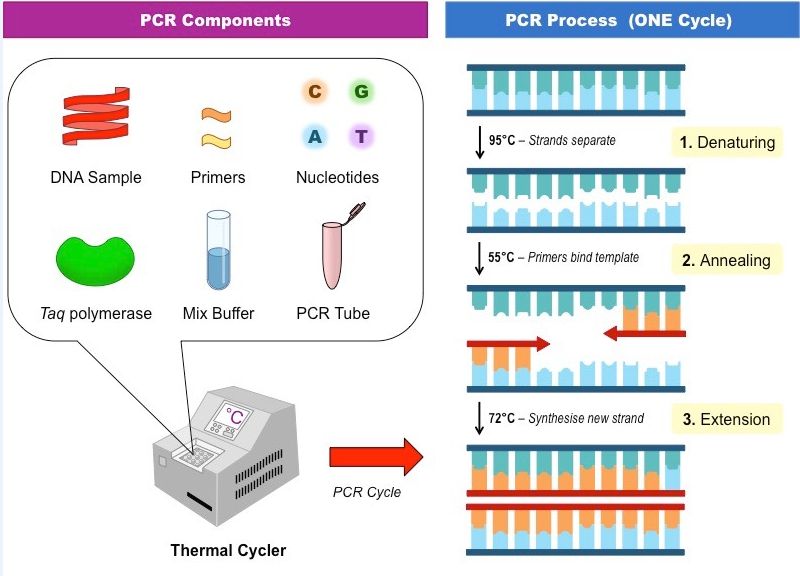
The Polymerase Chain Reaction (PCR)
 المؤلف:
John M Walker and Ralph Rapley
المؤلف:
John M Walker and Ralph Rapley
 المصدر:
Molecular Biology and Biotechnology 5th Edition
المصدر:
Molecular Biology and Biotechnology 5th Edition
 الجزء والصفحة:
الجزء والصفحة:
 17-11-2020
17-11-2020
 2440
2440
The Polymerase Chain Reaction (PCR)
In some respects, the PCR can be regarded as a form of molecular cloning, since it is a technique analogous to the DNA replication process that takes place in cells and the outcome is the same, namely the generation of new DNA molecules based exactly upon the sequence of the existing ones. PCR is a laboratory technique that is currently a mainstay of molecular biology. One of the reasons for the global adoption of the PCR is the elegant simplicity of the reaction and relative ease of the practical manipulation steps. Indeed, combined with the relevant bioinformatics resources for the design of oligonucleotide primers and for determination of the required experimental conditions, it provides a rapid means for DNA identification and analysis.
One problem with early PCR reactions was that the temperature needed to denature the DNA also denatured the DNA polymerase. However, the availability of a thermostable DNA polymerase enzyme isolated from the thermophilic bacterium Thermus aquaticus, found in hot springs, provided the means to automate the reaction. Taq DNA polymerase has a temperature optimum of 72 °C and survives prolonged exposure to temperatures as high as 96 °C and so is still active after each of the denaturation steps.
The PCR is often used to amplify a fragment of DNA from a complex mixture of starting material usually termed the template DNA. However, in contrast to conventional cell-based cloning, PCR does require knowledge of the DNA sequences which flank the fragment of DNA to be amplified (target DNA). From this sequence information, two oligonucleotide primers are chemically synthesised, each complementary to a stretch of DNA to the 3´ side of the target DNA, one oligonucleotide for each of the two DNA strands. For many applications PCR has replaced the traditional DNA cloning methods as it fulfils the same function, the production of large amounts of DNA from limited starting material; however, this is achieved in a fraction of the time needed to clone a DNA fragment. Although not without its drawbacks, the PCR is a remarkable development which has changed the approach of many scientists to the analysis of nucleic acids and continues to have a
profound impact on core genomic and genetic analysis.

 الاكثر قراءة في مواضيع عامة في الاحياء الجزيئي
الاكثر قراءة في مواضيع عامة في الاحياء الجزيئي
 اخر الاخبار
اخر الاخبار
اخبار العتبة العباسية المقدسة


